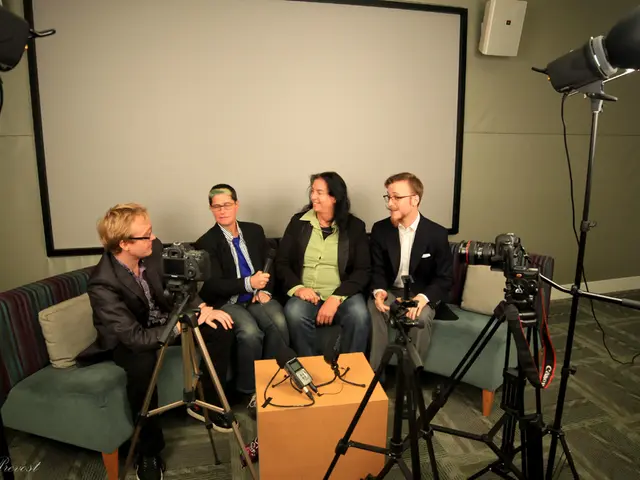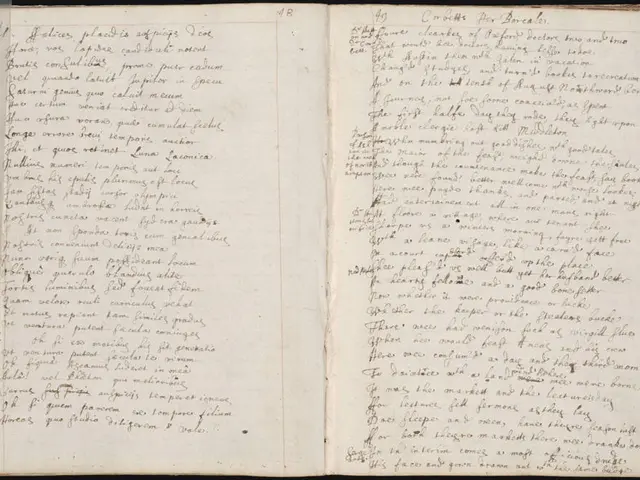Rapid Reinstatement: Air Force Accelerates Return of Warrant Officers in Unprecedented Timeframe
Warrant Officers Return: Air Force's Fast-Tracked Project
Get ready to meet a new batch of Air Force leaders! In a whirlwind of planning and hard work, the Air Force is bringing back warrant officers for the first time in 66 years, with the graduation ceremony set for December 6.
In a record-breaking turnaround, just 296 days after the official announcement by Secretary of the Air Force Frank Kendall, the first batch of warrant officers will grace the stage at Maxwell Air Force Base, Alabama, marking a significant leap forward for the service. This rapid development is no small feat for an organization as large and bureaucratic as the Air Force.
Lt. Col. Justin Ellsworth, the cyberspace operations officers' career field manager, has been at the forefront of this whirlwind project. "We were all hands on deck from the moment we found out about it," he said, referring to SecAF's announcement.
Warrant officers, initially developed to serve as technical experts, have become crucial components in career fields where perishable skills, such as cybersecurity and IT, are paramount. The rapid pace of technology means that experts cannot afford to be distracted by traditional leadership courses. Alex Wagner, assistant secretary of the Air Force for manpower and reserve affairs, explains the urgency perfectly, stating, "Folks who are experts in that can't afford to be sent off to a leadership course for eight or nine months."
With China and Russia as formidable rival forces in the great power competition, maintaining a strong technical edge is essential for the Air Force's success. Gen. David W. Allvin aptly summarizes the situation, stating, "We are in a competition for talent, and we understand that technical talent is going to be so critical to our success as an Air Force in the future."
However, realizing this vision so soon was no easy task. Each Air Force rank comes with its unique policies and systems regarding pay, benefits, retirement, and separation, among other factors. Lt. Col. Marjorie Barnum, chief of the retirement and separations branch within the Air Force's Manpower, Personnel, and Services Directorate, spearheaded the challenge of making sure these policies and systems could accommodate the new ranks.
"There was a lot of behind-the-scenes work to ensure that the pay and personnel systems were ready to incorporate the new ranks," Barnum explained.
The team also had to figure out how to evaluate future warrant officers, strike the right force balance, and reintroduce the ranks into an Air Force that hasn't seen them since the 1980s. Col. Andrew Feth, who represented the Air Force Chief Information Officer on the project, likened the effort to a scene from the film "Apollo 13," where NASA engineers pool their resources to find solutions.
"We were all the parts on the table," Feth explained, "We all had our own skills and knowledge within our own areas."
The rapid development of the Warrant Officer Training School (WOTS) was facilitated by a cross-functional team that stepped outside their usual lanes to hammer out the policy details quickly. The team worked tirelessly, even laughing at the government's lack of provision for overtime.
Despite the many challenges, the project's success was largely due to the support from the highest levels of the service, a shared vision for success, and the enthusiasm of the rank-and-file. The caliber of applicants was so high that officials decided to expand the first cohort from 60 to 78 slots.
As the process continues, the Air Force still faces outstanding questions, such as modeling the right mix of skills and grades to retain as the number of warrant officers grows. They are also developing a professional military education program for warrant officers and working on their "street-to-seat" program for qualified civilians.
To prepare the Air Force for the new ranks, the Air Force launched a warrant officer roadshow—a series of town hall briefings and leadership meetings at various bases—to ensure everyone is ready when the warrant officer shows up. Lt. Col. Ellsworth puts it succinctly, "We want to make sure when the warrant officer shows up, [the base] understands here's how you utilize him or her within your organization."
In this fast-paced race of great power competition, the return of the warrant officer program has already proven to be a major milestone for the Air Force. As Lt. Col. Ellsworth states, "I've been in the Air Force just about 18 years and I've never seen us move this fast on a program."
- To address the urgency in technical fields like cybersecurity and IT, the Air Force is developing a professional military education program for warrant officers, recognizing that traditional leadership courses could distract experts from their essential duties.
- As the rapid development of the Warrant Officer Training School (WOTS) was facilitated by a cross-functional team, they worked tirelessly to ensure that the pay and personnel systems were ready to incorporate the new ranks, even taking on overtime without proper government provision.
- In the race of great power competition, the Air Force understands the significance of providing education and self-development opportunities for warrant officers to foster career development in their specialized technical fields, which are crucial for the Air Force's security and defense against formidable rival forces like China and Russia.




